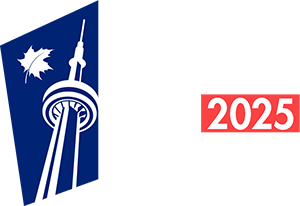Farm Property Assessments
Farm properties vary widely in both size and volume of agriculture production. MPAC treats land which is predominantly used for agriculture production (raising or commercial production of agriculture commodities) as farmland, including:
- field crops
- livestock raising, breeding and grazing (i.e., cattle, swine)
- poultry rearing, hatchery
- dairy farming
- fruit orchards and vineyards
- maple syrup-producing properties (subject to criteria set out in Ontario Regulation 286/04)
- boarding and maintenance of horses (subject to criteria set out in Ontario Regulation 100/05)
- horticulture, including sod, nursery stock and Christmas trees
- fish farming, including licensed ponds that are used to propagate/culture and sell bass and trout
- fur farming
- beekeeping
How your farm property is assessed
To assess your farm property, we compare it to similar farm properties that have sold in your area. We start our assessment of your farm property by comparing it to open-market, arm's-length sales of farms to farmers who intend to keep using them as farms. We also consider several components, including the value of the farmland, farm outbuildings and residence, as well as any other non-farm structures that may exist to establish your property's value. Our video on how MPAC assesses farm properties offers a good overview.
MPAC does not value the following uses of a property as a farm:
- Retailing of goods or services.
- Storage of primary agricultural commodities for others as a business operation.
- Maintenance of livestock or other animals for recreational purposes.
- Manufacturing of primary agricultural commodities.
- The breeding and raising of pets.
The structures you have on your property can also affect how we assess various portions of it. We use the following codes to categorize your property and structures:
- Primary and secondary structure codes describe the type of primary structure (usually your home), and the secondary structures on your property.
- Residential structural features describe key details about your home, such as the number of bathrooms, and whether you have central air or a finished basement.
Components of a farm property’s value
1. Farmland
All farms in Ontario are assigned to a farm neighbourhood based on common factors such as climatic zone, soil type and suitability, and comparable properties selling for similar prices per acre. Within each farm neighbourhood, adjustments are made to reflect different soil quality classification.
When estimating value, we use the direct comparison approach, which compares the farmland on your property to similar farmland in your area that has been sold.
Farmland sales
Using land title documents registered at Ontario Land Registry Offices, we gather the following farm property sales information:
- owners' names
- legal description
- sale amount
- sale date
We then send out farm sales questionnaires to gather additional important information regarding the farm sale.
Valid farm sales for the purpose of MPAC property assessments
- The buyer is a farmer operating a bona fide farm operation, or the buyer has commenced operating a bona fide farm operation for the first time.
- The sale is an arm’s-length transaction in the open market.
- The property had a reasonable period of time for exposure to the market.
- The sale amount is expressed in terms of money.
Sales that can't be used for the purpose of MPAC property assessments
- Transactions between family members or between a parent company and its subsidiary.
- Forced sales (e.g. bankruptcy of vendor).
- Speculative sales (e.g. sold by a farmer to someone anticipating a future use of the property other than farming).
Farmland Classes
We consider different soil types and textures when assessing the agricultural value of your farm property.
We classify farm soil under one of six quality classes based on how productive it can be. The factors we consider for classification include:
- soil texture
- topography
- erosion
- stoniness
- flooding
- drainage
- depth to bedrock
2. Residence
- We consider the following:
- dimensions of your farm residence
- type and quality of construction
- age and condition of the residence
- how much it would cost to rebuild
3. Residence land
If the farmer lives in the residence, then we assess one acre of the land supporting the house as farmland. If the house is occupied by a non-farmer, the land not farmed is considered residential property, and is assessed accordingly.
4. Farm outbuildings
We look at the cost of replacing these buildings while considering:
- design
- type and quality of construction
- age and condition of each structure
- how much it would cost to rebuild each
5. Other buildings
Other buildings on farm property, such as wineries and retail stores, are valued based on the cost to replace while considering:
- design
- size
- age and condition
- quality of construction
To learn more, review the methodology guide.
How we classify your farm property
Residential Tax Class
By default, we place your farm in the residential tax class. If you are approved for the Farm Property Class Tax Rate Program by Agricorp, we place your property in the farm tax class.
Farm Tax Class
If your property is eligible for the Farm Property Class Tax Rate Program, we will place the farmland and associated outbuildings in the farm tax class. You will be taxed at no more than 25 per cent of your municipality's residential tax rate. Property owners must apply for the Farm Property Class Tax Rate Program with Agricorp.
Multiple property classifications
Depending on your use of the land, portions of your farm property may be assigned other classifications, which will affect your property's overall valuation.
For example, if a portion of your farm is used for purposes other than farming (e.g. vehicle-repair garage), that portion is classified according to its current use, and will be assessed accordingly.
Information gathered from other sources
We also review information about your property gathered from:
- property inspections and data reviews
- land title documents
- building permits
- farm sales questionnaires
Programs to reduce your property taxes
As the owner of a farm property, you may be eligible for a reduction in the property taxes you pay through an incentive program. Learn more about qualifying for farm tax incentive programs.




